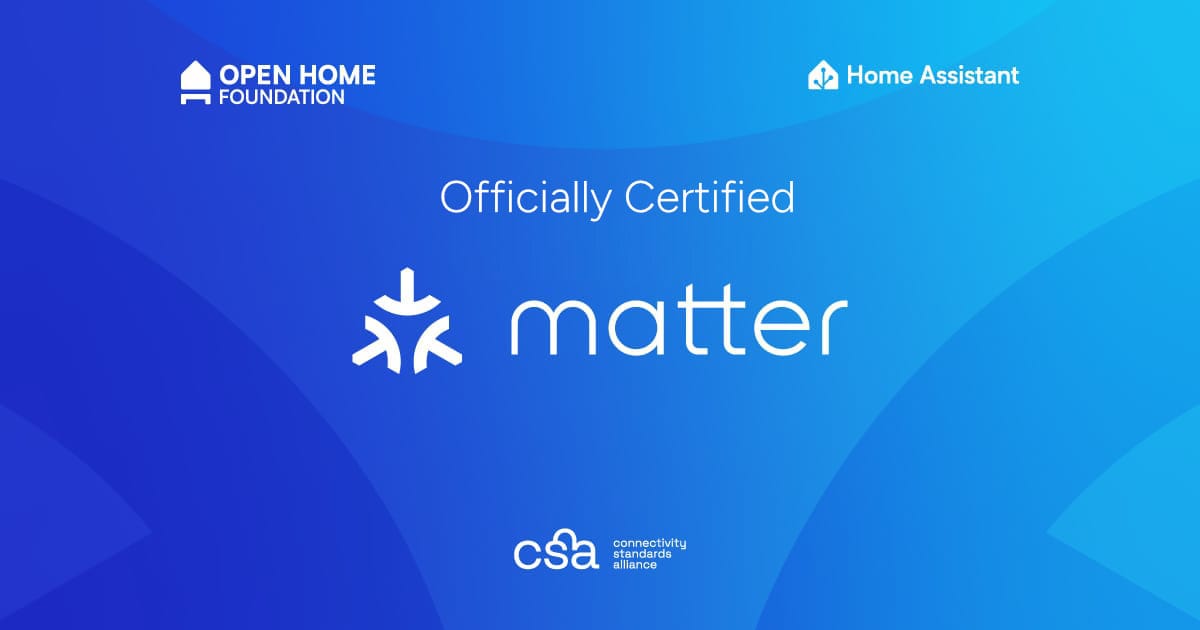In the world of smart homes, compatibility between devices has always been a major challenge for users and developers. Recently, the open source smart home platform Home Assistant officially passed the Matter certification issued by the Connectivity Standards Alliance (CSA), becoming the first open source project to obtain this certification. This breakthrough not only enhances Home Assistant’s position in the smart home field, but also brings new possibilities for the future development of the smart home ecosystem.
Table of contents
Matter: Vision and reality of unified smart home standards
Matter was created to solve the interoperability problem between smart home devices, allowing products from different brands to work together on the same platform. However, there is still a gap between ideal and reality. Since the release of the Matter 1.0 standard in October 2022, although the supported product types have expanded to hundreds, including lamps, sockets, fans, locks, refrigerators, washing machines, etc., in practical applications, Matter's ease of use and effectiveness still face challenges.
For example, while Matter devices can theoretically be connected and controlled through any Matter controller (such as Google Home or Amazon Alexa app), in practice, compatibility issues between different platforms still occur from time to time. The existence of these problems means that users still face certain difficulties and limitations when building smart home systems and purchasing equipment.
Home Assistant's breakthrough from support to certification
As an open source smart home system, Home Assistant already supported the Matter standard in its beta version as early as 2023. 2024/01/11 Live broadcast explains the importance of Matter to cross-brand collaboration in smart home systems. However, formally obtaining CSA's Matter certification marks a new milestone in standards compliance and reliability. Matter certification is not only a recognition of Home Assistant's technical strength, but also sets an example for other open source projects.
It is worth noting that Home Assistant's Matter support is mainly implemented through an add-on called "Open Home Foundation Matter Server". This component is separated from Home Assistant as an independent software component. The advantage of this architectural design is that there is no need to re-authenticate each time Home Assistant is updated, thereby improving the efficiency of development and maintenance.
Certification brings win-win situation for users and developers

The certification won't bring any immediate changes to existing Home Assistant users. However, in the long run, this will enhance users' trust in the Home Assistant platform and may attract more developers and brands to join the Home Assistant ecosystem. Currently, several Matter devices have passed the "Works With Home Assistant" program certification (eg Aqara U200 smart door lock).
In addition, this certification also provides a reference example for other open source projects, proving that open source projects can also achieve industry-leading levels in standards compatibility and reliability. This will encourage more open source projects to pursue high-standard certification, thereby promoting the progress of the entire smart home industry.
Future challenges and opportunities for Matter
Although the launch of Matter aims to unify smart home standards, it still faces many challenges in its actual promotion and popularization. For example, compatibility issues between different platforms, user acceptance of new standards, and support from device manufacturers will all affect Matter's development prospects.
However, as more and more devices begin to support Matter, it is expected that more smart home products will be compatible with each other in the future, providing users with greater flexibility and choice. At the same time, the active participation of open source platforms such as Home Assistant will help promote the popularization and application of Matter, and ultimately achieve seamless interconnection of smart home devices.
Having said that, Home Assistant's Matter certification marks the important position of open source smart home platforms in the industry and sets an example for the development of other open source projects. With the promotion of the Matter standard and the support of more devices, the smart home ecosystem will become more interoperable and compatible, and the majority of users will ultimately benefit. We look forward to more open source projects and companies joining the Matter ecosystem in the future to jointly promote the prosperity and development of the smart home industry.
